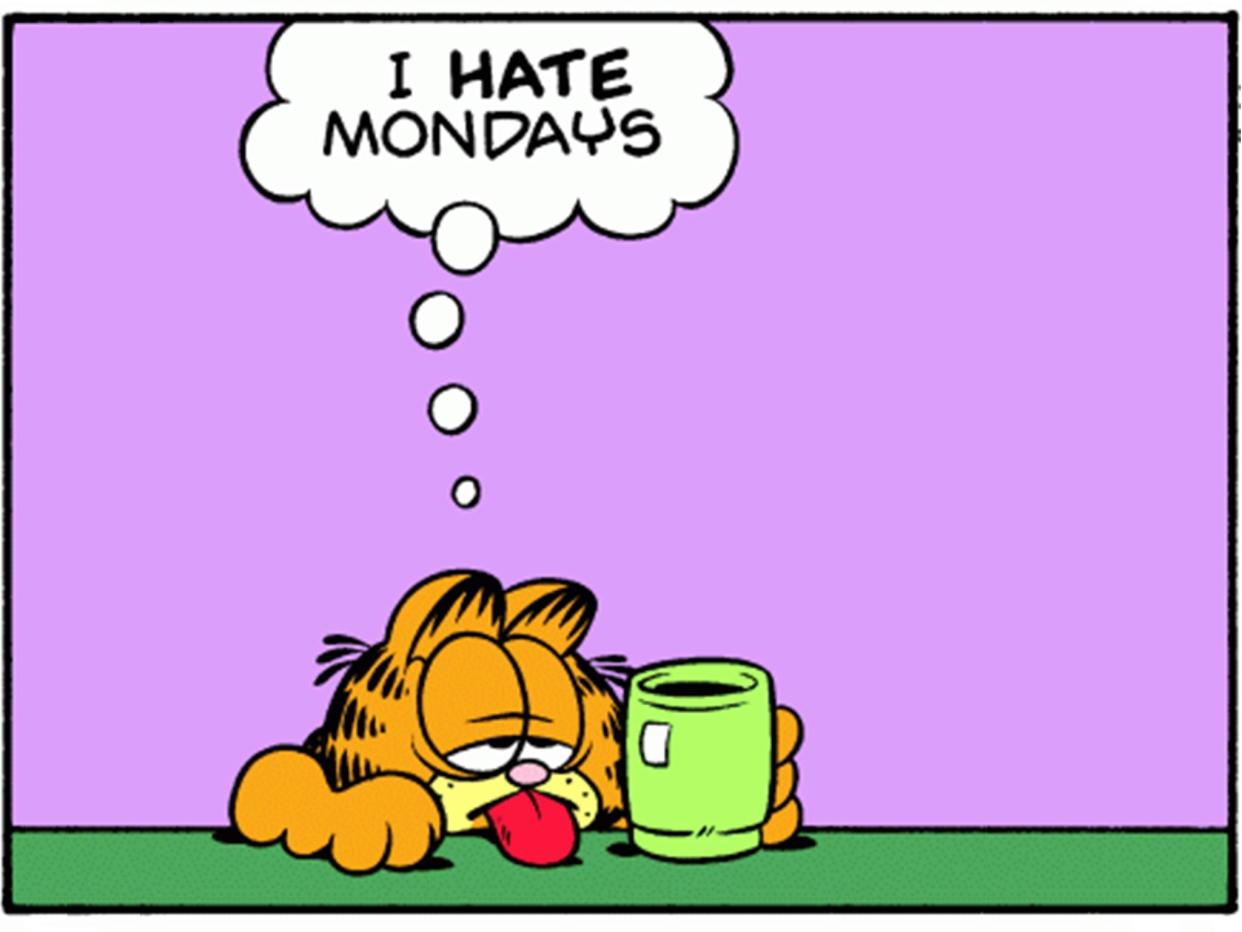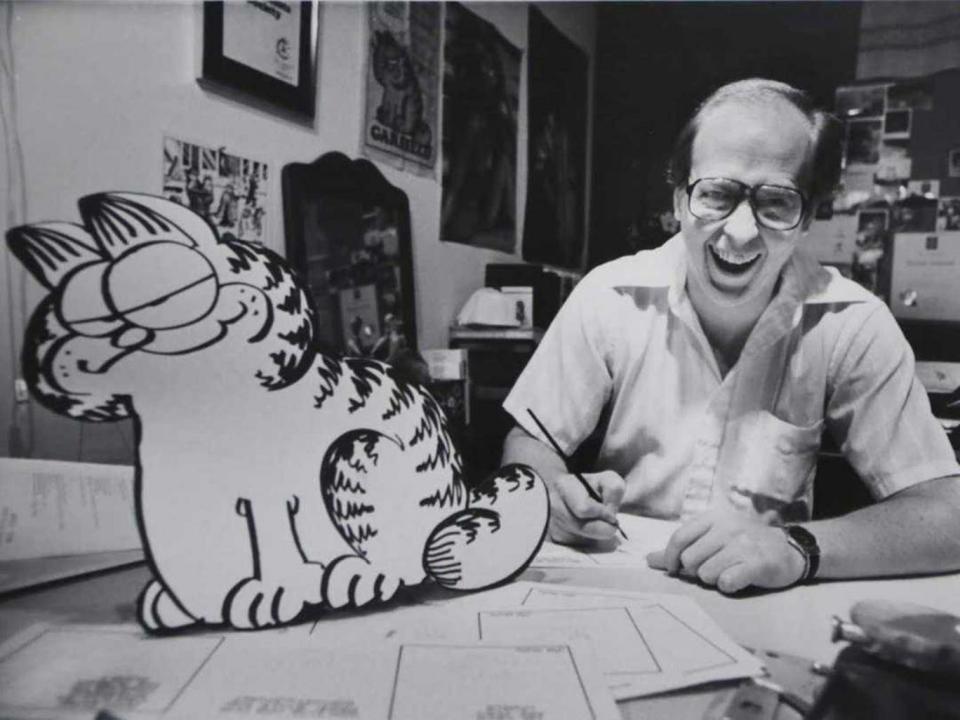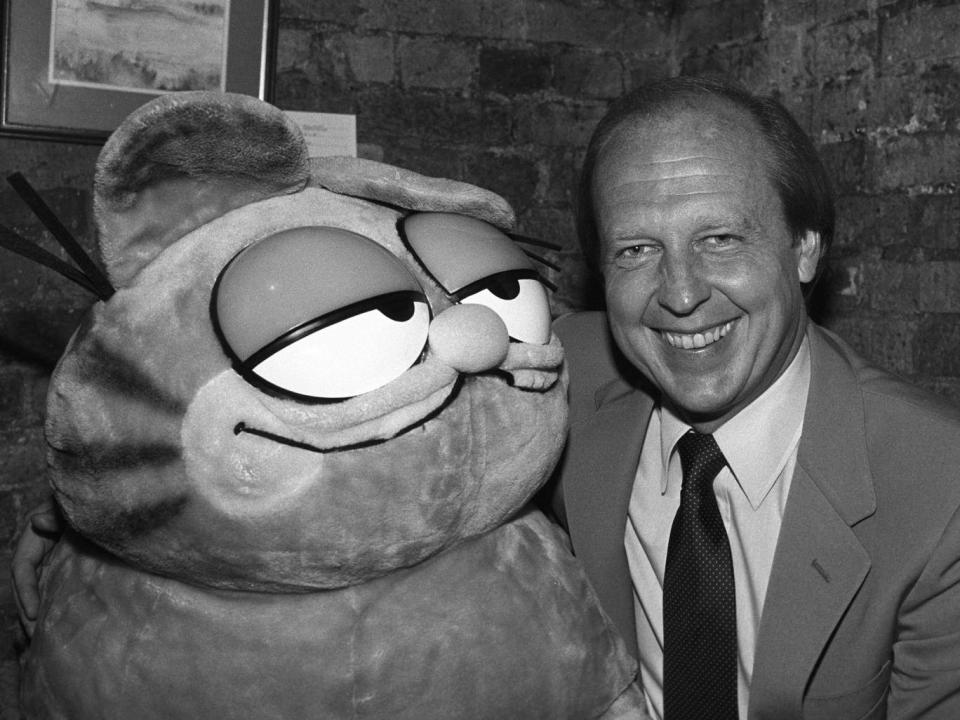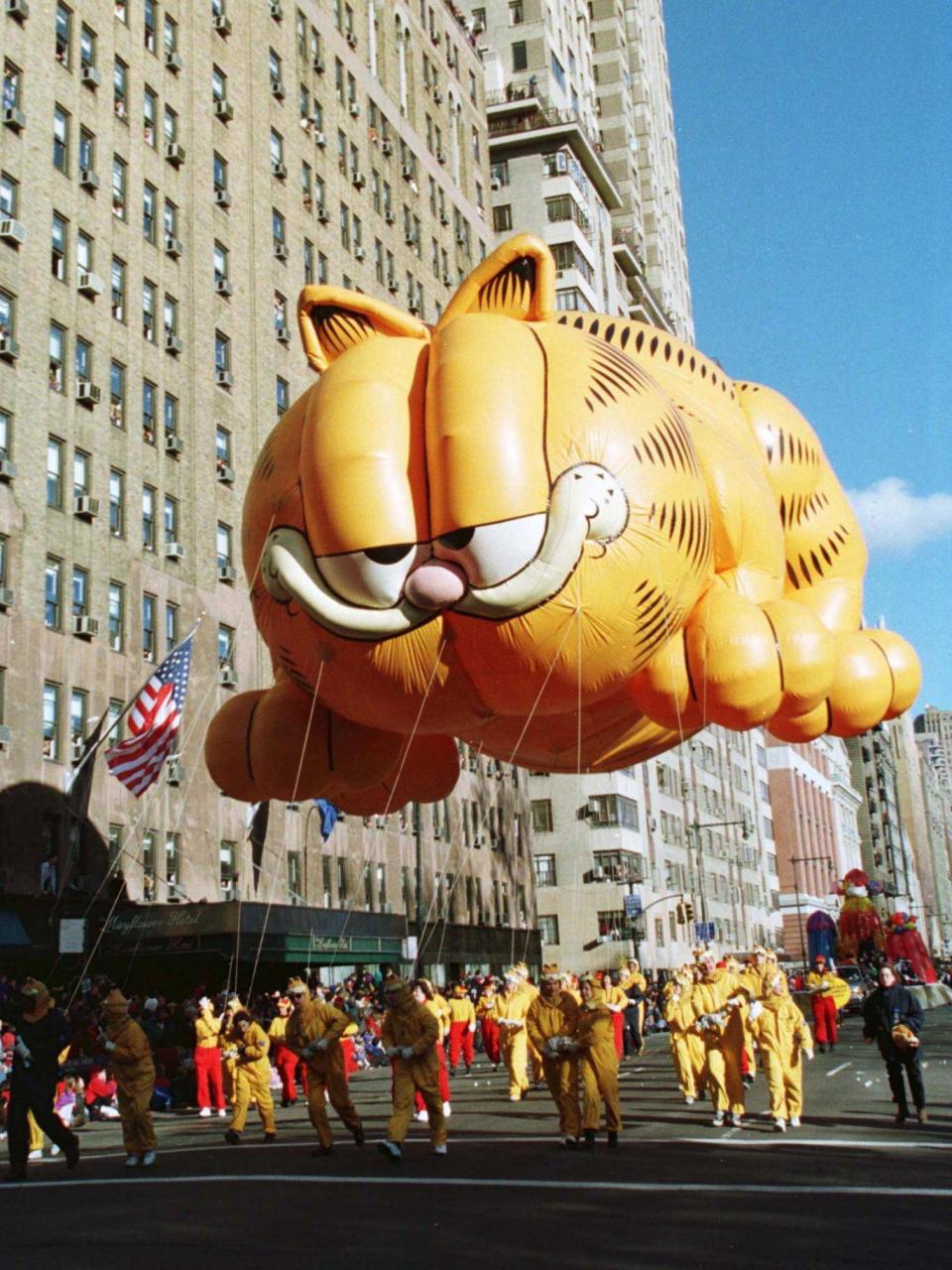Garfield at 40: How the cartoon cat became a worldwide sensation

When you’ve been creating the adventures of arguably the world’s favourite cartoon cat for the past four decades, it must become quite a struggle to summon up fresh feline funnies all the time.
“Fortunately, I have funny days,” says Jim Davis. “Some days you wake up, and you’re just not funny. If you’re staring at the piece of paper and you’ve got nothing, if you have to force something, then the readers will pick up on that in a nanosecond.
“But if you wait for the funny days, when you get them the gags just start flowing. Sometimes the ideas are coming so fast I can’t write them down fast enough before I forget them. On those sorts of days I can get a good couple of weeks’ worth of work done.”
Davis is, of course, the creator of Garfield, the slightly cynical, somewhat overweight cat who loves lasagne and hates Mondays. Which is a little bit ironic as it’s Monday morning in Indiana where Davis lives when I speak to him, and his general enthusiasm for everything and anything is almost palpable down the phone line. The only thing bothering him is the heat, but he’s planning to ensconce himself in his studio for a day’s work pretty soon.
Garfield first hit the newspapers as a three-panel strip on 19 June 1978. But if Davis had had his way, the face that launched a thousand lunchboxes and cuddly toys might never have been a cat at all… but an insect.
His first attempt at a cartoon strip he tried to syndicate to the newspapers was Gnorm Gnat. If you look at those early drawings you can see the kernel of Garfield’s none-too-impressed expression in there, but as one editor told him as he tried to sell the idea in the early 1970s, “It’s funny, but… bugs? Who can relate to a bug?”
So Davis went back to the drawing board, literally, and after studying the funny papers realised that although the canine world was well served by the newspaper comic strips, nobody was really giving cats their due.

So he plumbed the depths of his childhood, living on a farm in Marion, Indiana, with his parents James and Betty and his younger brother Dave, about 25 miles from where he now lives. Davis was born in 1945 – he turns 73 next month – and suffered from bad asthma as a child.
“I got sick a lot,” he says. “All that baling of hay, all that farm work… so I did a lot of drawing while I was holed up in my room. I used to do drawings to try to make my mother laugh. But I tell you, my art was so bad in those days! I had to label everything because no one could tell what it was… I’d do a drawing of a cow and I’d have to write ‘cow’ next to it with an arrow point at it.”
But Davis pursued art, studying it at school and at Ball State University. He did cartoons for his school and college papers, then did a couple of years as a commercial artist after graduating before getting a job with Tom Ryan, the creator of the Tumbleweeds syndicated comic strip, and learning his craft there.

Davis has just returned from the Denver Comic Con, where he was a guest to mark the 40th anniversary of Garfield. The orange cat is constantly winning new fans, thanks to being one of the most syndicated comic strips in the world, and at one point the line to see Davis at the convention had three generations of Garfield fans standing together.
Could he have envisaged, more than 40 years ago, that Garfield would have such staying power? Well, even then he had big plans for the cat. “I remember doing an early interview when Garfield first got going, and I told the guy that I hoped I’d get 25 years’ work out of Garfield, that was my goal. Well, we obviously blew past that some time ago.”
It was always Davis’s plan to get Garfield as widely syndicated in as many newspapers as possible, and from the word go he started to build up deals among the many papers running across the States back in the 1970s. But almost before he’d begun, potential disaster struck.

“I’d got Garfield in about 40 papers,” he remembers. “But then the Chicago Sun-Times dropped the strip. As that was the biggest paper I had, I thought this was the beginning of the end.”
But the Sun-Times readership had other ideas. More than 1,300 of them lobbied the newspaper demanding the return of Garfield, and the management eventually capitulated. Davis drew a cartoon with the cat triumphantly returning through the lobby of the Sun-Times.
It was the last time anybody was going to drop Garfield. Now the strip runs in 2,100 newspapers and has a readership of more than 200 million.
“Newspaper bosses hate strips like Garfield,” laughs Davis. “And that’s because they can never drop them! There are only a handful of strips like that… Peanuts, Blondie, Beetle Bailey.”

Garfield proved especially popular in the UK. Davis recalls, “When we were setting off we got so much interest in Britain, and I think that might be because I’m such a fan of British humour, that might have come through a bit. Benny Hill, Monty Python… I love all that stuff. I mean, the Ministry of Silly Walks… it doesn’t get any funnier than that.”
In fact, probably the only place where Garfield hasn’t been as roaring a success as you might imagine is Japan. Davis puts that down to the Japanese liking a longer lead in to their jokes than the three-panel swift-hitter gags of Garfield. He remembers having a Japanese version of one strip translated back to English, which he did on occasion just to make sure everything was above board. It was a strip featuring a quick gag in which Garfield remarks that a dog is so ugly that cars chase him. The translation revealed a lengthy explanation of the joke in which any hope of a laugh was utterly buried.
Garfield was named after Davis’s grandfather, and his constant companions have been Jon, the human with which he lives (nobody would really dare say that Garfield has an owner), fellow cat Nermal, and dog Pooky. Davis has crafted the art of delivering a payoff in just three panels consummately over the past 40 years.
“It takes 10 seconds to read a Garfield strip,” he says. “In that time you’ve got to set up the joke and then make it work. So I do a lot of sight gags, a lot of physical humour, and the trick is to put something in there that the kids are just going to laugh at, but also another level which is going to make the adults smile.”
Davis shies away from overtly including what he calls political and social commentary in the strips, but he can’t deny that the feel-good factor from Garfield and friends seems to be especially welcome right now.

“It gives people a place to not think about the world for a few seconds,” he says. “A place to share a laugh, to lighten up life. But that’s always been the case… in the US Depression, comics had never been so popular. When people are really struggling, that’s when they need to balance the scales the most.”
Garfield’s success in print meant that pretty early on the cat made the transition to animation. TV series earned several Emmy nominations and there have been two movies plus three DVD animated features. Davis has written Garfield screenplays as well as working on the animated series, and relishes the extra room he gets to deliver the jokes.
Even approaching 73, Davis has an enthusiasm that’s infectious. He tells me in delighted technical detail all about some new CGI techniques which he’s employing for a series of 30 second short Garfield films. “There’s no dialogue, and we can run these together to make two-and-a-half minute films, and they’re perfect for putting out on social media, for download, for broadcast… I’m having a total ball putting it all together.”

He embraces new technology with unalloyed joy. “It used to take us eight months to do an animation, physically cutting the audio tape with scissors, all that. Now it’s so much quicker. I took the actual newspaper strip digital about eight years ago, in the way that I work, but I do still start off with pencil sketches.”
Garfield’s ubiquity was in no small way helped by the character’s absolute perfection for merchandising. Soft toys proliferated in the Eighties and Nineties, Garfield keyrings and pencil toppers… pretty much anything you could put Garfield’s face on was fair game. The licensing business became so big that Davis set up his own offshoot company, Paws, Inc, in 1981, to manage the worldwide rights usages of the character.

Davis also set up a charitable trust, the Professor Garfield Foundation, in collaboration with his old alma mater, Ball State University. The trust has taken the lead in a number of environmental projects in Indiana, including reforestation and the restoration of prairie and wetlands. But it also works hard in an area close to Davis’s heart – improving literacy.
“I get so much feedback from parents who say that Garfield has been instrumental in helping their kids to learn to read,” he says. “There’s something about pictures that makes it easier for children to understand the words above them. There’s a lot of anecdotal evidence, and we’re trying to do a more in-depth study at Ball State, but I think comic strips are so important for developing literacy skills. And there are also some kids who are wired differently, who are bright but just do things differently, and they seem to be able to grasp reading comics quicker.”
It’s a far cry from when comic strips were decried as trash literature that should be thrown in the bin rather than get in the way of “proper” reading.
“Absolutely,” says Davis. “But there are studies that say two-thirds of newspaper readers started off reading the funny pages, and if you start with comics then you can move on to Wuthering Heights or whatever… there are no limits after that.”
Speaking of limits, does Davis have any plans to retire? The idea shocks him. “I’ll carry on doing Garfield as long as I can, as long as I can keep making it funny…”
Speaking of which… is today a funny day?
“It is, actually!” he laughs. “I’ve got loads of ideas! I told everyone to hold my calls after this interview. I’d better get back to the drawing board…”

 Yahoo News
Yahoo News 
